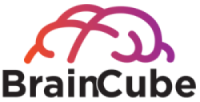modern hybrid-cloud infrastructure with enhanced observability and automation capabilities to simplify operations and accelerate the delivery of your modern applications.
The Modern Data Center Challenge
Applications today are very diverse and hyper-distributed in nature by being built continuously and rapidly on modular microservices architectures and provisioned inside virtual machines, containers, or even bare-metal hardware. Ensuring that these applications can be run on with a cloud-like experience is key as IT leaders look to connect, automate and optimize their on-premise and public cloud environments to improve agility and lower operating costs. Along with our friends at NetApp, our goal is to help you take bold steps to prepare your data center for this future.
Hybrid cloud solutions offer several benefits to the enterprise.
- Investment protection. There are many legacy applications that are unsuitable for the public cloud, whether because of regulatory prohibitions, cost, technology, or other factors. A hybrid cloud approach lets an organization continue to leverage on-premises servers and legacy applications while taking advantage of public cloud offerings – IaaS or SaaS – to modernize applications and deploy new and enhanced features without impacting normal business operations.
- Scalability and agility. While data gravity, regulations or governance mandates may demand that sensitive data or active databases on-premises, archival, disaster recovery, and less-sensitive data can be stored in the public cloud. A hybrid solution also supports the concept of ‘cloudbursting’ – utilizing cloud resources to handle increased demand whether seasonal, due to new product release, or growth-related. This eliminates the need for an enterprise to over-provision infrastructure to handle peaks, and cloud resources can be spun down if and when no longer needed.
- Bottom-line savings. Hybrid architectures offer several cost savings opportunities. The costs of archival, disaster recovery, and other data storage costs are comparitively less than on-premises infrastructure. Additionally, since public cloud resources can be spun up or down virtually on demand, there is no need to provision – or pay for – cloud resources until they are needed, and then only when they are actually being used.
importance of hybrid cloud infrastructure
Hybrid cloud infrastructure provides flexibility, scalability, and cost savings in many areas. Any organization that requires off-site backup of enterprise data can simply utilize a public cloud service and eliminate the need for multiple sites or shipping media to a third party like Iron Mountain.
Where the cloud excels in some applications, others thrive on-premises, especially older legacy infrastructure that is not readily re-platformed onto public cloud provider platforms. However, enterprises can begin refactoring those legacy applications with modern coding and deployment models while they continue to operate from private cloud/on-premises servers.
One major benefit of hybrid cloud infrastructure is leveraging public cloud provider service level agreements (SLAs) to offer those same high uptime levels to enterprise users and clients. Again, since private-cloud infrastructure needed to guarantee public-cloud class SLAs is expensive, many organizations will rely on the public cloud to offer the reliability they need.
Finally, by utilizing cloud-based disaster recovery (DR services), businesses can configure frequent snapshots of either virtual or physical servers being protected. Should disaster strike the on-premises infrastructure (or primary cloud IaaS provider), VM snapshots can be spun up creating a backup environment in minutes – and businesses do not start paying for that IaaS infrastructure until it is needed – saving the expense and headache of procuring, maintaining, upgrading, and servicing backup IT infrastructure that is rarely if ever needed.




